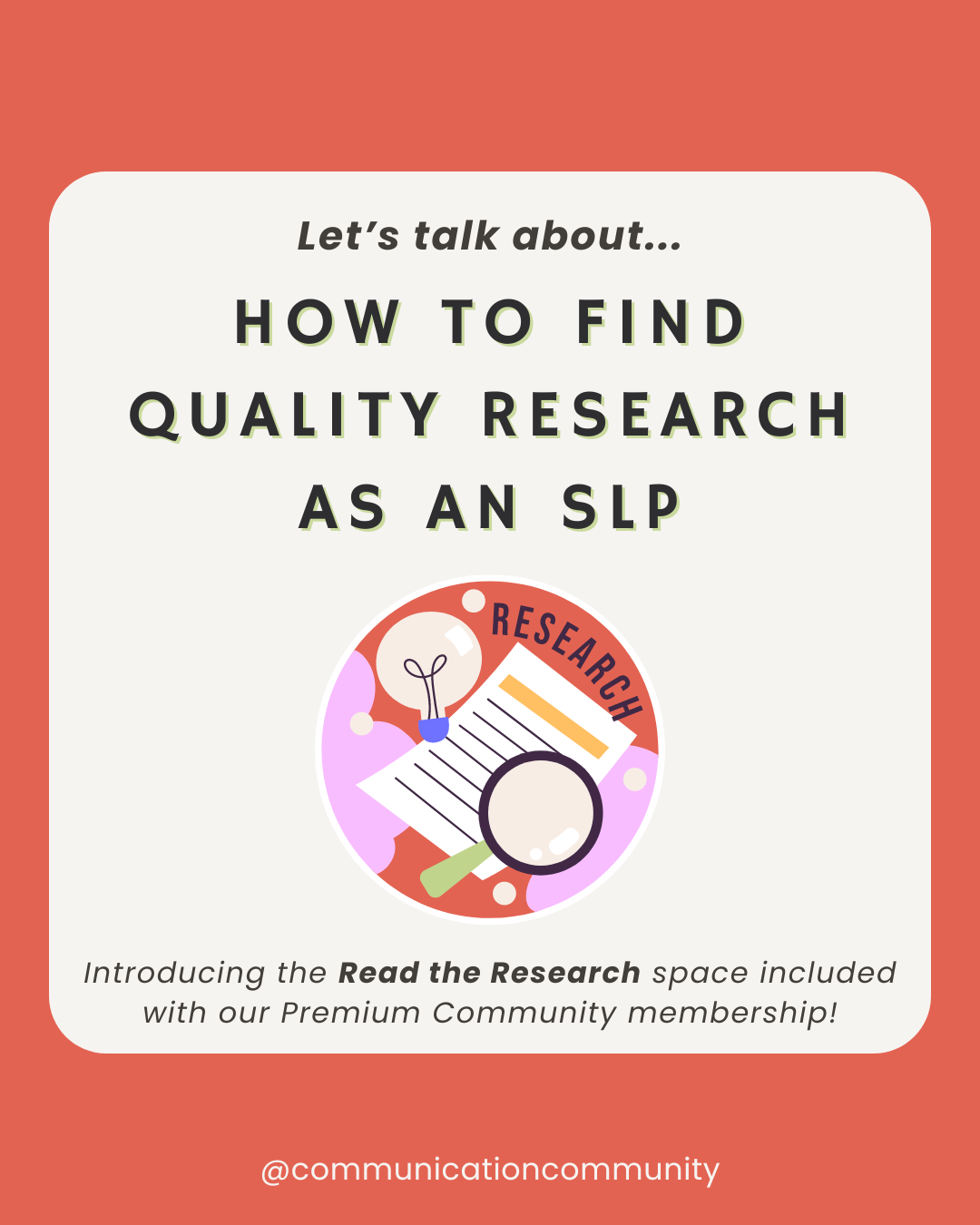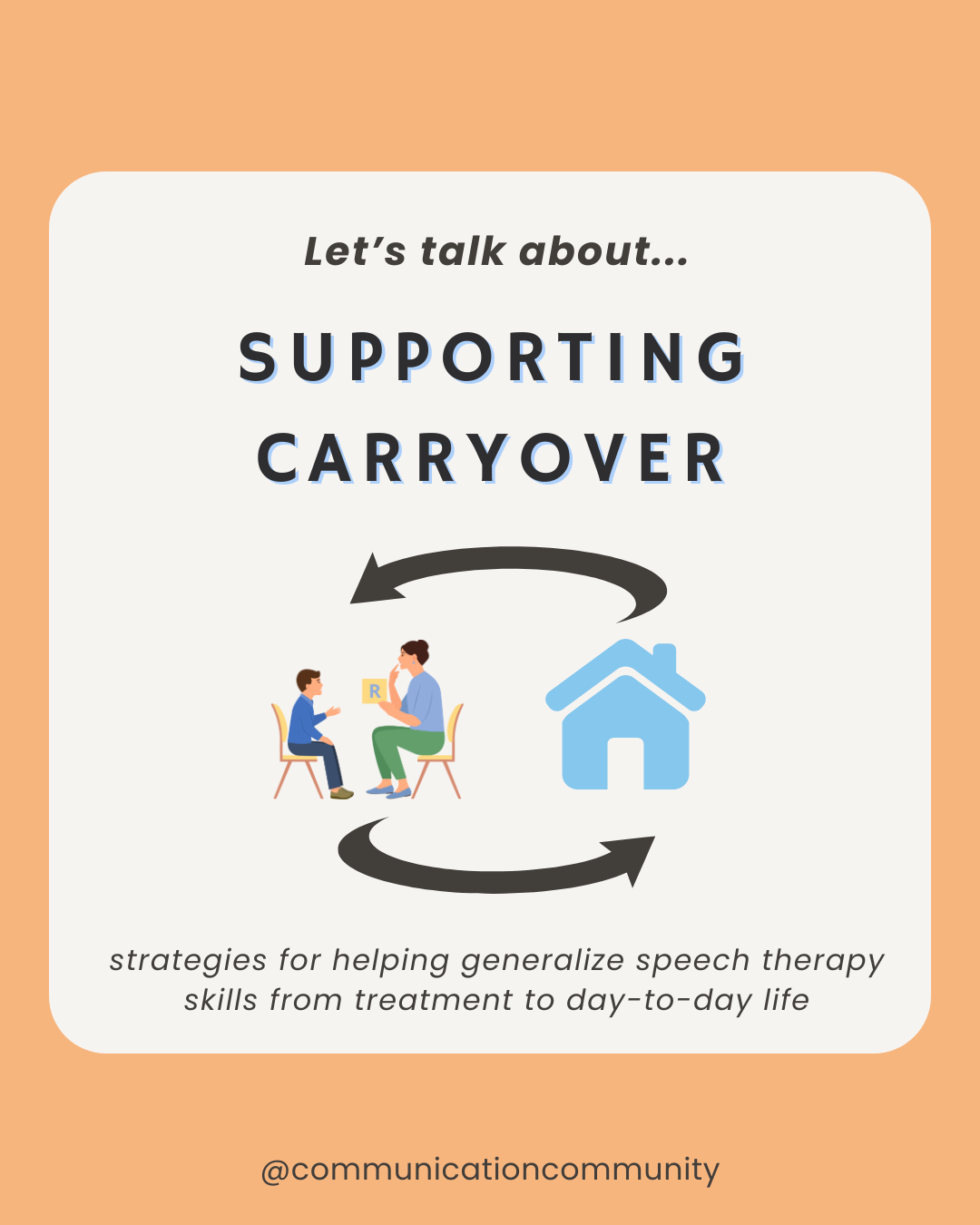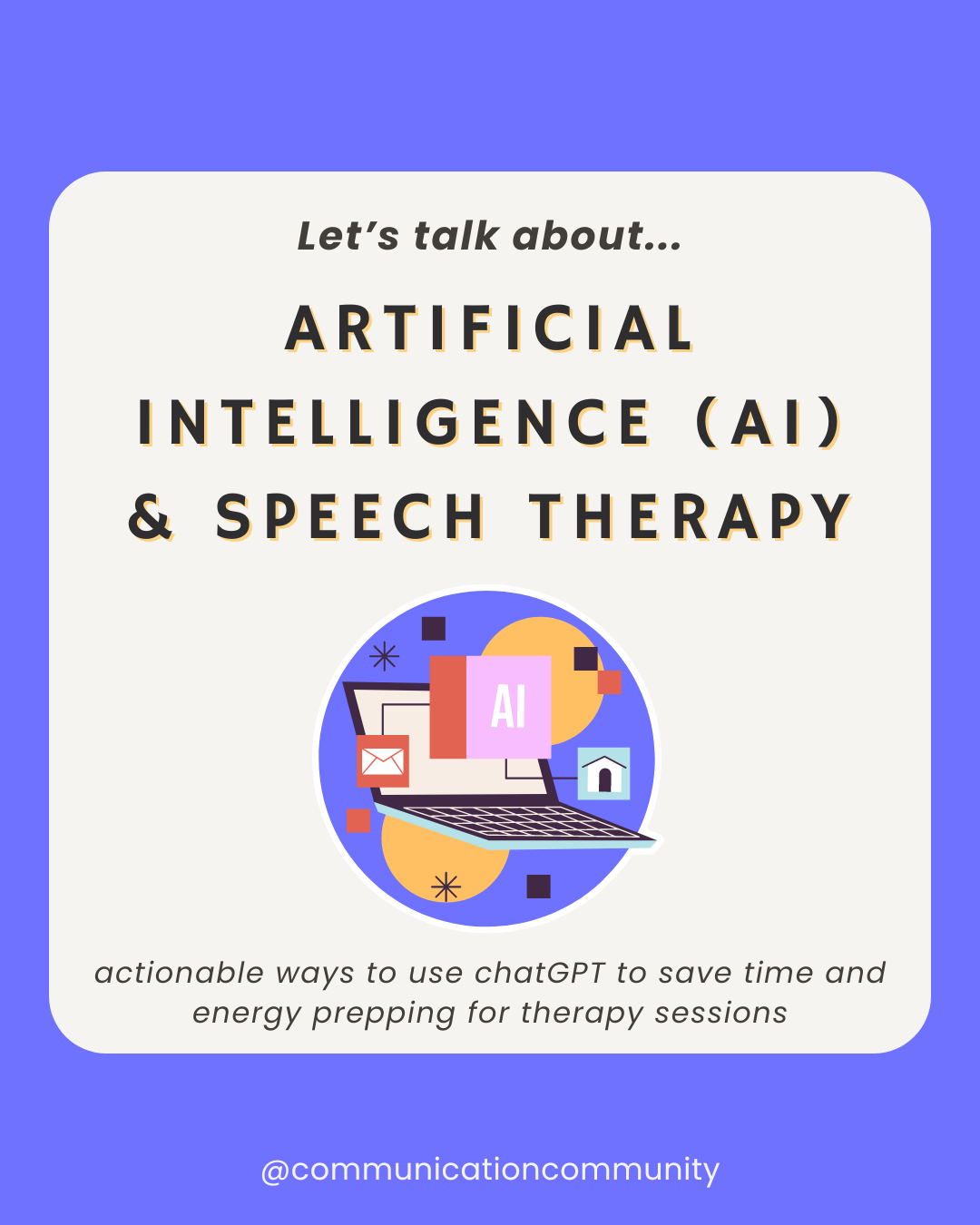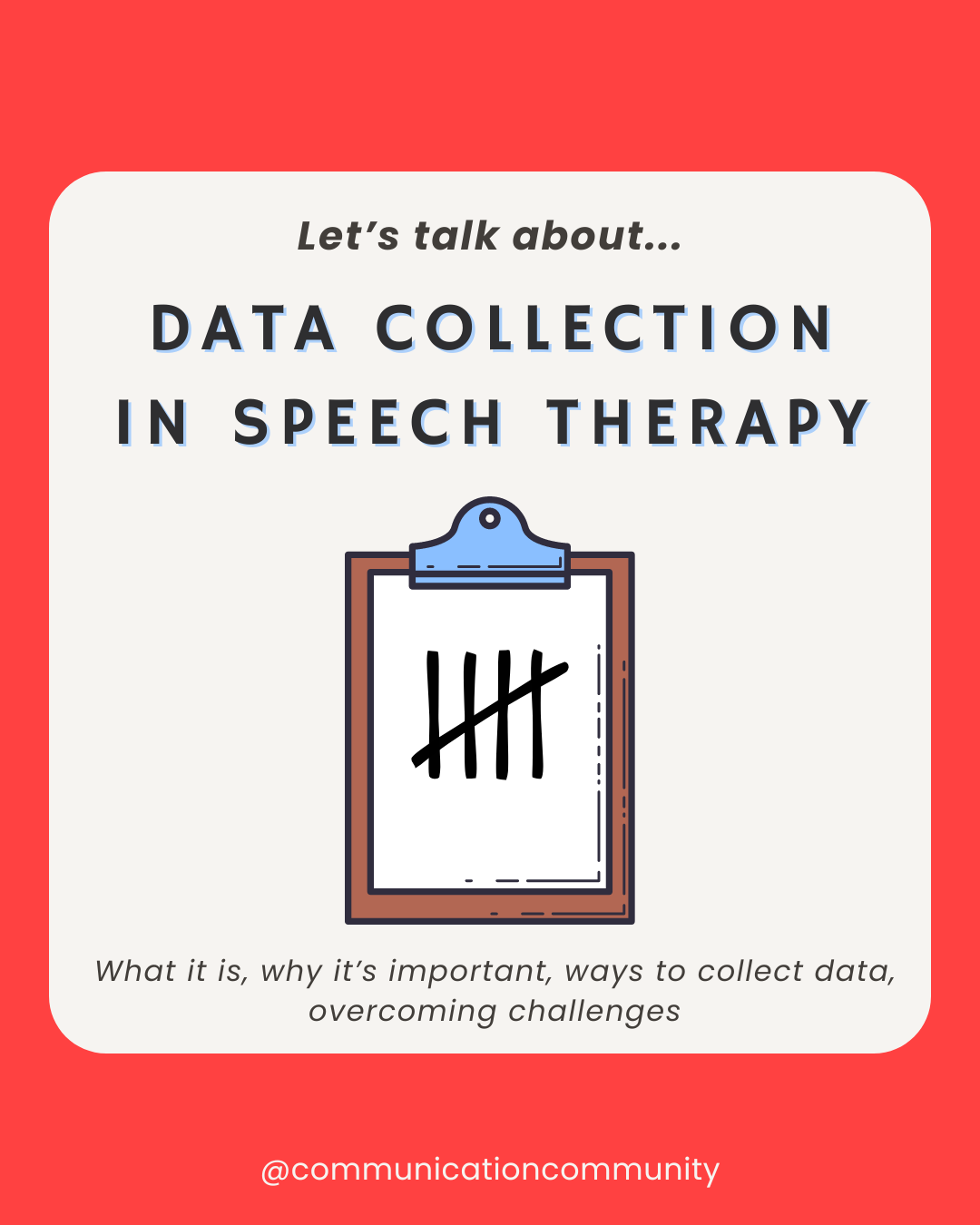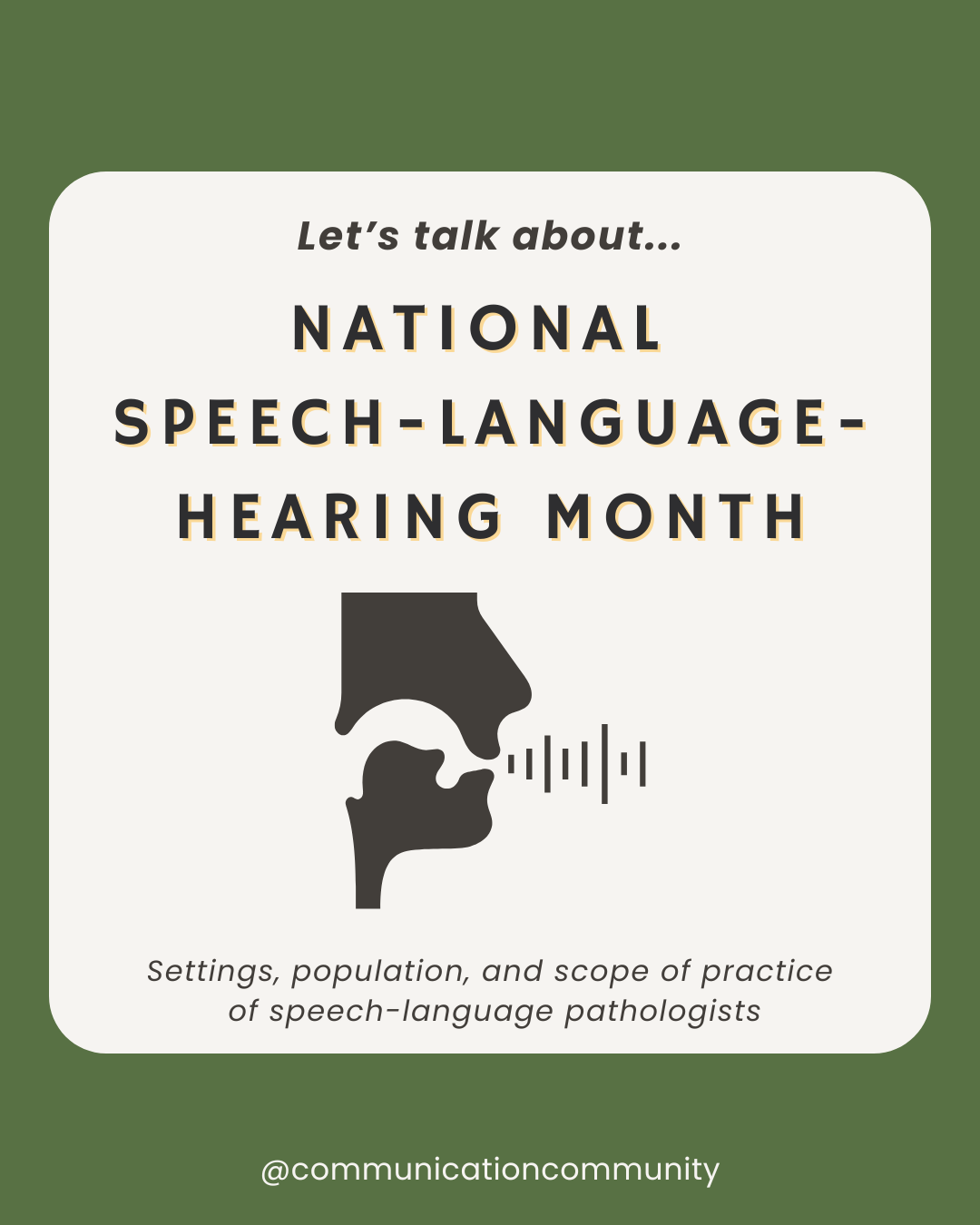Fluency Packet Goal Bank
Find a variety of stuttering and cluttering goals that fit all of your clients' needs! This packet covers education, awareness, reducing negative reactions, stuttering modification, and speech modification goals along with information on stuttering and cluttering disorders!

What is Stuttering Therapy?
Stuttering therapy is often a multi-faceted therapy that may include education, counseling, learning and applying speech strategies, and more. Because individuals with fluency disorders (sometimes referred to as persons who stutter or PWS) are often trying to manage their stuttering as well as their emotions/attitudes related to stuttering, speech therapy sessions are not just about speaking more fluently or with fewer disfluencies! Sometimes, you may hear therapists talk about ways to “stutter more easily” or aid someone to a point where they feel most comfortable with their speech.
Stuttering therapy activities may vary a lot depending on the client's age, their personal goals for therapy, and how long they’ve been receiving speech therapy services. Before planning speech therapy sessions for stuttering, we recommend reading about fluency disorders (stuttering and cluttering) and different goals for stuttering and cluttering.
Planning Stuttering Therapy Sessions
When I plan sessions for PWS, I often make loose plans but realize that they may change based on the client’s needs, feelings, or goals for the day. For example, if I work with a student who has a presentation coming up, we may spend our time discussing the presentation rather than reading the article I had initially prepped. I find that the older the PWS, the more our sessions are fluid. For instance, usually, less time is spent on using stuttering or speech modification strategies and more on discussing speaking experiences and feelings.
I try to include these components in all sessions:*
- Check in about the past week/days; this may include a client’s speech or not. They may be feeling nervous about a test, which can impact their emotions/attitudes about their speech, and that can be valuable information to go off of for treatment
- Discuss a positive and/or negative situation related to their speech or recent interaction(s).
- Reflect on an article, podcast, or chart related to the client’s speech or fluency in general
- Provide opportunities to use stuttering and/or speech modification strategies/tools
*Note: Younger clients may have more difficulty talking about these feelings or may not have fears related to speaking. In these cases, some of these components may be omitted.

Considerations for Mixed Speech Therapy Groups
We know it’s common to group multiple students together for sessions when working in a school setting. We also know it’s expected that these students have different goals. For example, you may have a group of three students: one with articulation goals, one with language goals, and one with fluency goals. This can make planning and individualizing a session a bit harder but it’s doable! I usually begin sessions by doing a quick check-in and then reviewing what each student is working on.
For example, I might review the correct production of the /th/ sound for the student with articulation goals and then review stuttering modification strategies with fluency goals. I often use similar target words or activities for all students (usually while playing a simple game like the card game War) but emphasize the target sound for one student, and grammatical correctness of a sentence for another, and the use of a stuttering modification strategy for the third.
Key Reminders for Clinicians for Stuttering Therapy
- Not all PWS will want speech therapy or want to “fix” their stuttering! It’s important to periodically check in on clients’ goals and keep those at the top of mind.
- A PWS sounding relatively “fluent” in speech therapy sessions does not necessarily mean they’re ready to end speech therapy sessions. They may still have difficulty with avoidance, fear, speaking effort, and other emotions/attitudes related to their speech.
- Only focusing on fluent speech can be detrimental to PWS. This may be one component but we also encourage clinicians to check in about speaking effort, avoidance behaviors, and more.
5 Stuttering Therapy Activities
1. Education/Awareness
Education is always the first step when seeing someone for fluency therapy for the first time! This may look like learning about stuttering facts and myths, identifying the body parts needed for speech, or figuring out what a disfluency actually sounds like. Depending on age (typically for preschool/early elementary age), there may be more emphasis on parent/caregiver education and ways to carry over strategies at home.
There are a number of websites and resources related to stuttering. Some of these include:
- The Stuttering Foundation
- National Stuttering Association
- The Stuttering Association for the Young
- Check-ins: Check in about how individuals are feeling and how their stuttering has felt over the course of the week.
- Self-assessment: these can be formal (e.g., OASES) or informal questions about relative speaking effort, overcoming different/avoidant situations, goals for the session, and more.
Note: this often takes up the majority of time in sessions, especially for older students!
2. Would You Rather…? Questions
These are great because it’s easy to adjust their complexity level. For example, if you’re working on using stuttering strategies at the word/phrase level, these questions can typically be answered in a word/phrase. However, if you’re working on using them at the sentence or connected speech level, these questions can be answered in a complete sentence with a rationale.
- Example: "Would you rather be able to fly or be invisible?"
- Word level: "Fly"
- Connected speech level: "I would rather be able to fly because then I could fly to my friend’s house without needing to get a ride from my grandma."
There are a number of question prompts online but you can also check out this book!
3. Open-Ended Conversation Questions
Open-ended conversation questions are similar to Would You Rather…? questions in that they can easily be adjusted for complexity levels. There are a number of questions online but these cards are also fun, too!
4. Games (Board & Cards)
Playing simple games, like Go Fish or Connect 4, are a fun way to target goals in sessions. If you’re playing Go Fish, you may choose to target speech strategies just by asking questions related to the game, (e.g., “Do you have any 8s?”) or can be used in conjunction with Would You Rather…? or conversation starter questions. Games are also great for mixed groups: one individual can say a target sound 5 times, the next can work on a stuttering goal, and the third can name 3 items in a specific category.
Note: Hedbanz would also be a great game for this!
5. Reading (Articles & Passages)
Reading is one way to target stuttering goals and literacy skills. For individuals who are working hard not to avoid certain words, reading in sessions can be a lower-pressure way to actually say these certain words.
Though I think reading is a great way to target stuttering goals, I try to use reading AND conversational activities as individuals tend to spend more time speaking aloud versus reading aloud.
I like stories and articles from Readworks and DOGO News but any book or story can be used!
Bonus: Most speech therapy sessions, regardless of goals, include speaking! If one individual is working on defining similes or using multiple meaning words, another individual can partake in the activity as well, with the focus on identifying their disfluencies, purposefully stuttering, or trying a new fluency enhancing strategy. This can also provide opportunities for individuals to use strategies in a different context and with different individuals.
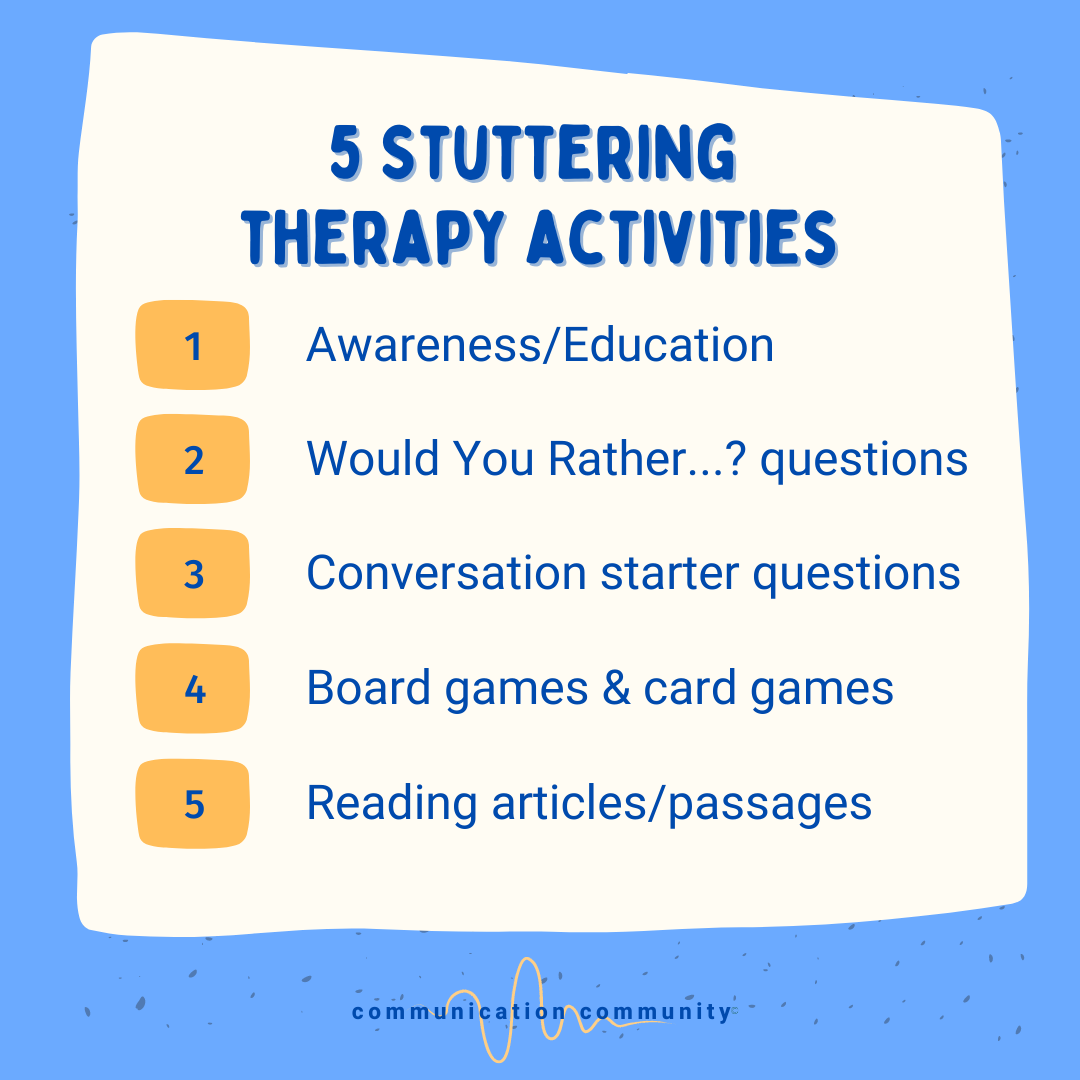
More Speech Therapy Activities
This post contains some affiliate links and we are (slightly) compensated if you use them, but all opinions are our own. We appreciate the support!


